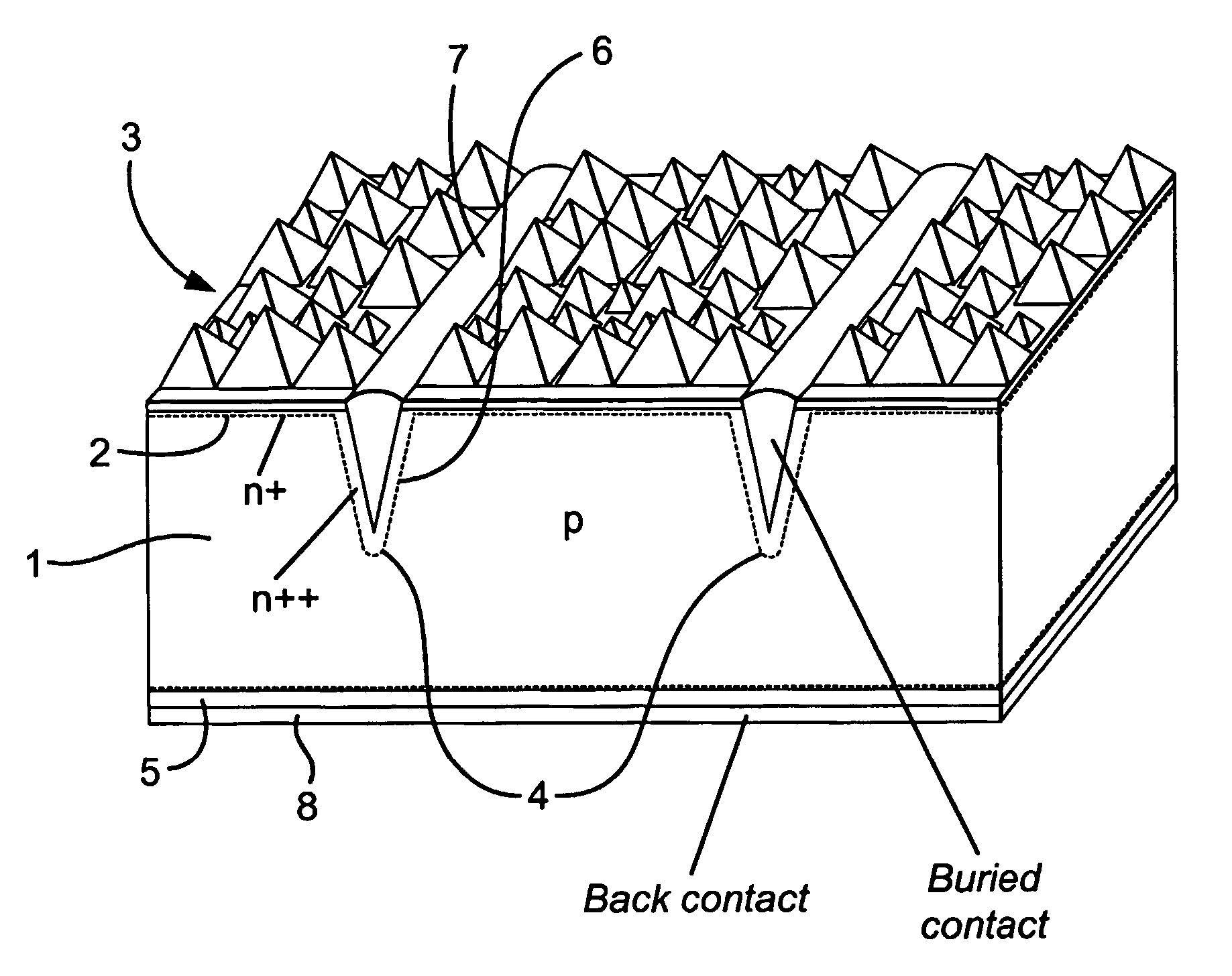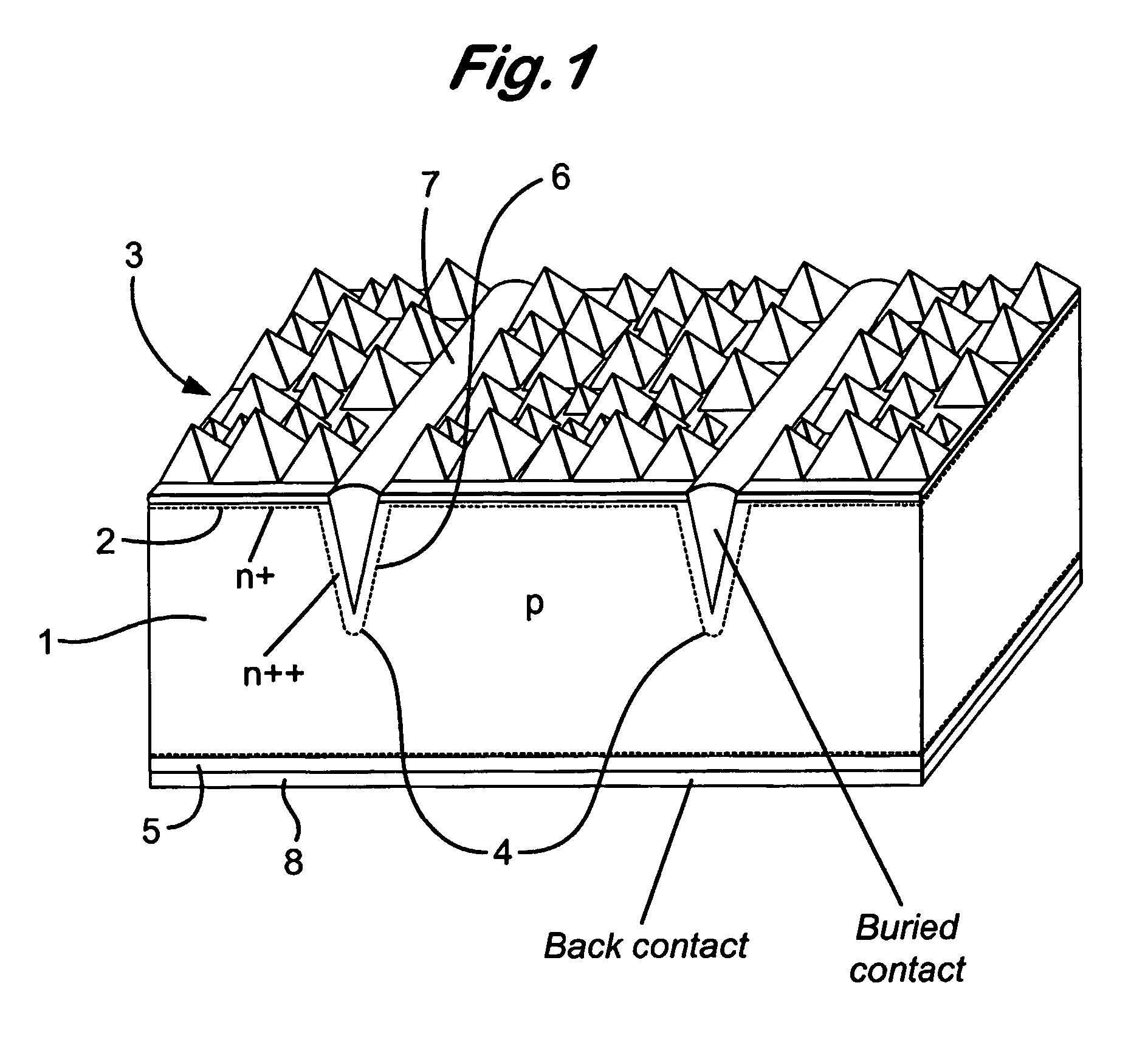Process for manufacturing a solar cell
a solar cell and manufacturing technology, applied in the field of manufacturing a solar cell, can solve the problems of low-cost cz wafers to be used, inability to compensate for aluminum doping, and performance impairments
- Summary
- Abstract
- Description
- Claims
- Application Information
AI Technical Summary
Benefits of technology
Problems solved by technology
Method used
Image
Examples
examples 1 – 3
EXAMPLES 1–3
[0038]147 cm2 area solar cells were prepared under varying conditions using the following general process.
Starting Material
[0039]Use was made of conventional CZ silicon wafers doped p-type with boron to a resistivity of 1.2 ohm.cm and grown with [100] crystal planes parallel to the wafer surface. The wafer dimensions were 127 mm square with rounded comers of a diameter 150 mm. The wafer thickness was 300 μm. Such wafers are commercially available, for example from Bayer Solar GmbH, PV Silicon GmbH or Pillar.
[0040]The wafers were anisotropically “texture” etched in a solution of sodium hydroxide and propanol at a temperature of 90° C. and cleaned by subsequent immersions in hydrofluoric acid and hydrochloric acid with intermediate and final rinsing in deionized water followed by drying.
Phosphorus Doping and Silicon Nitride Deposition
[0041]Wafers were placed in pairs (touching) in the slots in a quartz wafer carrier and treated in an atmosphere of ...
examples 4 – 11
EXAMPLES 4–11
[0055]The process of Examples 2 and 3 was repeated using a variety of sintering tempertures and times. For comparison, a cell with a BSF applied according to the prior art process as in Example 1 above was also tested. The results are shown in Table 2. It can be seen that generally, lower sintering temperatures and shorter sintering times result in higher efficiencies.
[0056]
TABLE 2Exam-Al sinteringNo. ofVoc / pletemp and timecellsIsc / AVFF(%)Eff(%)4prior art process265.1860477.116.45995° C. for 30 min95.2660978.117.06950° C. for 50 min95.2260778.516.97950° C. for 25 min105.3761378.617.68950° C. for 10 min105.4261578.717.89900° C. for 50 min105.4061578.517.710900° C. for 25 min105.4161678.417.711900° C. for 10 min115.4161678.617.8FF = Fill Factor, a measure of power out / (Isc*Voc)
No. of cells is the number of cells tested to obtain the average values given in the Table
PUM
 Login to View More
Login to View More Abstract
Description
Claims
Application Information
 Login to View More
Login to View More - R&D
- Intellectual Property
- Life Sciences
- Materials
- Tech Scout
- Unparalleled Data Quality
- Higher Quality Content
- 60% Fewer Hallucinations
Browse by: Latest US Patents, China's latest patents, Technical Efficacy Thesaurus, Application Domain, Technology Topic, Popular Technical Reports.
© 2025 PatSnap. All rights reserved.Legal|Privacy policy|Modern Slavery Act Transparency Statement|Sitemap|About US| Contact US: help@patsnap.com


